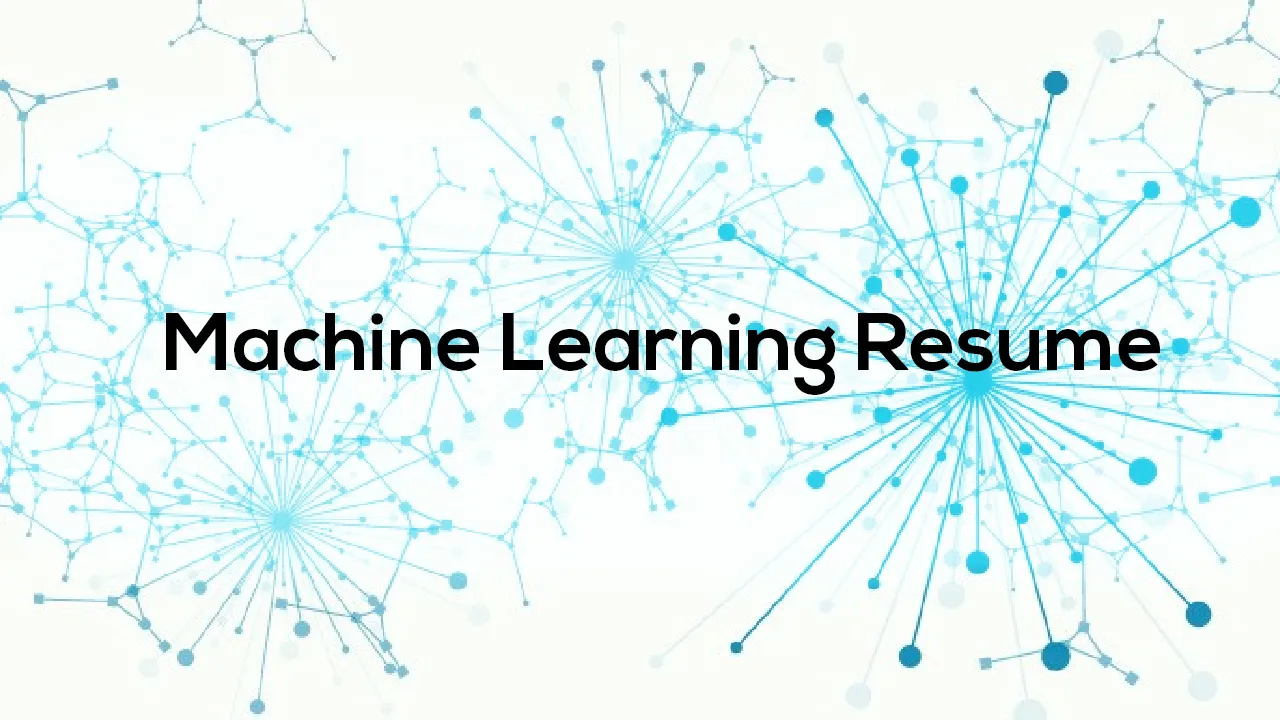In the current times, getting a Machine Learning job seems quite difficult seeing so much competition around. A Machine Learning Engineer/Data Scientist job posting gets more than 200 applicants within the first day itself. So how to tackle this situation so that you get an awesome Machine Learning job quickly?
Making a resume is a pain for most job seekers. We will break down each point here to clarity so that the process becomes buttery smooth for you. That’s exactly what this article talks about.
By the end of this tutorial, you will know the following:
- What makes a good Machine Learning resume
- Structure of a sample resume
- In-depth analysis of each section of the resume
- Do’s and Don’ts of the resume
Let’s get straight to it.
What makes a good Machine Learning Resume?
The first step to every job application is the resume. A resume is nothing but a medium of marketing yourself to the recruiter. It’s just equivalent to saying “Hey, here’s what all I have and done. And I’m awesome”. But that’s what an average resume does and miserably fails. A good resume should be a crisp, concise and very structured document that shows why you are right for the job you’re applying for.
The ATS Factor
Most of the job postings get 100s of resumes. So do you think the recruiter goes through every resume they receive? No. Most of the recruiters use an ATS (Applicant Tracking System) whose first task is to rate the resumes according to their content.
Once your resume aces the ATS barrier, it goes to the recruiter’s hands who scans your resume for a few seconds. That’s it. Just a few seconds. So our aim here is to make a resume that first passes the ATS barrier and then impresses the recruiter. And then you’re highly likely to receive a call from them.
Structure of a Sample Machine Learning Resume
Below is a sample of a Machine Learning resume that we will discuss. We’d suggest you follow along and make your own resume as you read through. The first and foremost thing to keep in mind while making your resume, and also the mistake which 8/10 people make while making their resume is – your resume doesn’t need to be of more than a page.
Making your resume unnecessarily 2 or even 3 pages long will in no way increase your chances of getting the call. Did you win a race in 7th standard? The recruiter doesn’t care. The whole idea here is to only include relevant information.

The template shown above is fairly good and tested one. However, you can always make a template of your choice. Also, you can add/remove the sections as it fits your profile and experience. The only thing to be kept in mind is, the simpler it is, the better. Let’s go over each section one by one.
Summary
The summary is not really a necessary one if you don’t have any professional experience. The only motive of the summary is to tell the recruiter about your background in 1 or 2 lines. If you are a fresher and don’t have any professional experience, you can skip this one. You can include this even if you have internship experience.
The major mistake that most of the applicants make is, adding unnecessary adjectives into the summary. For example:
“A highly motivated professional with proven work experience in Machine Learning. A hard-working, goal-oriented and proactive person. I am a team player who is a problem solver and possess leadership skills. Looking for a challenging role to showcase my skills and grow.”
This summary is not at all what the recruiter wants to see the first thing in your resume. And the sad truth is that it is what is present in most of the resumes. Dumping in adjectives like “Highly motivated”, “team player”, etc. will not make the resume stand out. It only makes it more redundant and wastes crucial space. The summary section should talk about how much experience you have, what major skills you possess and what kind of roles you’re looking for.
Contact Details and Social Profiles
This section should contain your phone number, your email address and the current city you’re living in. Do NOT include your whole address up to your PIN code. The recruiter has no interest in it. Keep the location details just to the city, or at most, the state.
Remember, we will only include relevant information. Try to put a professional-looking email address and not something which might put a bad impression on the recruiter. Make a new one if you don’t already have it. You’re going to use that for your entire life.
Put in your LinkedIn profile after customizing the link. Add your GitHub profile only if it has a good amount of projects and activity. Adding a Git link with no or very less activity will put a bad impression. Put in any other relevant links like your blog or website.
Work Experience
This is the most crucial part and the core of your resume if you’re an experienced professional. Include the relevant work experience by making use of action verbs. Keep the points concise and don’t put in too much information. If you’re a fresher and don’t have any work experience, then add the relevant internship experience.
If you don’t even have that, then skip this section and move to the next section and make that the core of your resume. Follow the writing style used in the template above. For checking how good your resume language is go to resumeworded.com.
Personal Machine Learning Projects
This section should include 1 to 3 good machine learning projects that you’ve made recently. Write about them in short and include the most important details. Do not include beginner-level projects like the Titanic, House price prediction, etc. Adding these will not make your resume stand out. If you’re a fresher or if you don’t have any relevant work experience, then this section should be the core of your resume. Move it to the top and add enough content by making some very good projects.
Skills
The skills section should include all the Machine Learning skills that you have- be it algorithms, tools and languages. A great way to make sure your resume clears the ATS is by adding the exact keywords mentioned in the JD of the job you’re applying for. This is because the ATS scores the resumes by the number of matches of keywords in the JD and your resume.
So slightly alter the skills by replacing the words used in the JD. For example, Linear Regression should be changed to Linear Models, if the JD has that. Try to include as many keywords as possible, but do not include the ones you don’t know about.
Hackathon Achievements
This is an additional section and can be skipped. You can also add another section that you’d want to show to the recruiter. Avoid adding your certifications from the MOOCs as they don’t add much weight to the resume. Only add certifications that would be relevant. Such as “Microsoft Certified Azure Specialist”, etc.
#artificial intelligence #machine learning #machine learning resume

